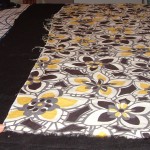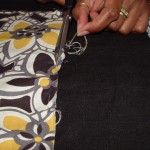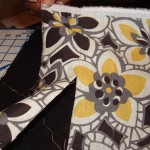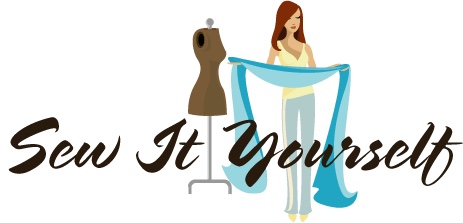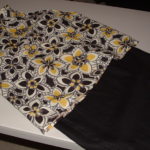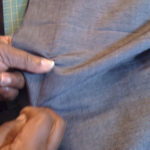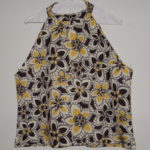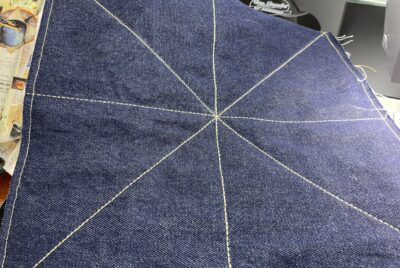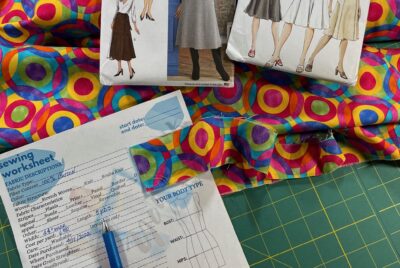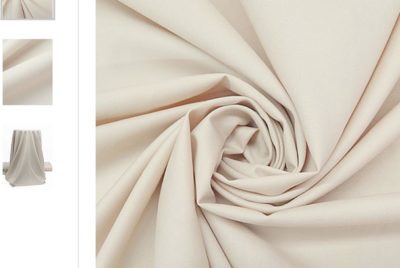7 Simple Ways to Practice Sewing Straight Line Stitches Straight line stitching How many times have…
Straightening the Grain of the Fabric
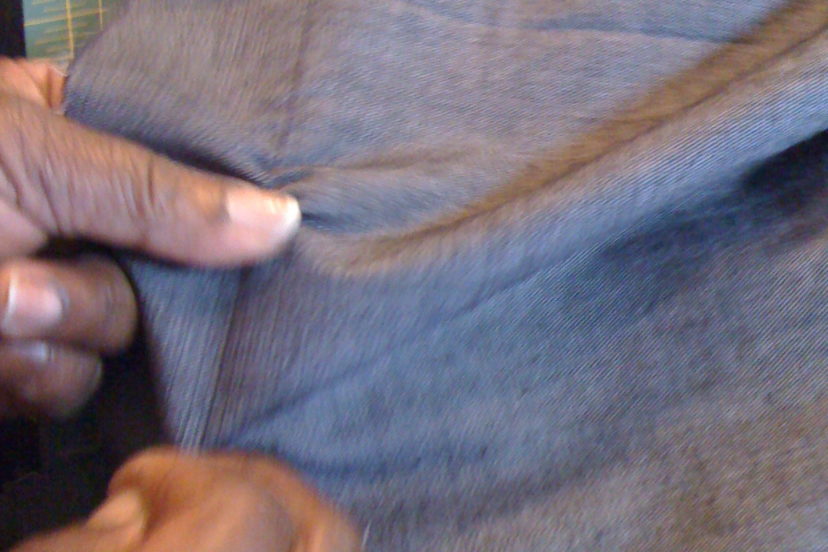
Straightening the grain of your fabric is part of the process of preparing your fabric to get that professional look you want. It is
absolutely essential prior to cutting your fashion fabric. In fact, both the pattern and fabric may both need attention before you do the final layout, and the success of your finished garment depends on how you prepared your fabric.
In order to understand why you should straighten the grain of the fabric, I think you should know a little about how fabrics are made or constructed.
One of the oldest methods of making fabrics is by interlacing two sets of threads together in a process known as weaving. One set of threads is stretched on a frame (loom) and is called the warp or lengthwise threads.
The other set is inserted so that they go over and under the warp threads to form a fabric. Since these threads travel back and forth from one side to the other, they are called crosswise or filling threads.
As the filling threads go back and forth, they go around the warp threads on the edges and form a self-edge, or what is called the selvage. This selvage edge is woven and smooth and it does not stretch or ravel.
During the manufacturing process, the fabric may have been pulled off-grain, so that grain lines are no longer perfect right angles. A garment made with an off-grain fabric will not hang correctly, so re-alignment must be done before cutting.
In clothing design and construction, the threads are referred to as grain. Grains indicate the direction of the thread. The warp threads are known as the lengthwise grain and usually run lengthwise on the body, from shoulder to hemline. The lengthwise grain has very little give or stretch.
The filling threads are called crosswise or around the body. The crosswise grain has more flexibility, drapes differently and gives a fuller look to the garment. As a rule, the crosswise grain is only used vertically to achieve a certain design effect, as in border print placement.
Every woven fabric such as cotton, silk, linen, or wool, consists of crosswise threads worked under and over the more sturdy lengthwise threads.
Then, there is another direction of fabric often referred to as the bias. Bias is the exact diagonal of a square of fabric. Now, the bias stretches the most, and a garment that is cut out on a bias usually drapes softly. It also tends to be unstable at the hemline.
Designers make use of the way the lengthwise, crosswise, or bias grain stretches or holds its shape and the way it hangs on the body. If the garment is designed to have the grain go in a certain direction, then it will not hang the same or look the same if the grain direction is changed when you cut out the fabric. For this reason, all garment pattern pieces are marked with arrows indicating the direction of the grain.
The placement of the grain on your body is very important in fitting clothes. If you see a bulge or wrinkle when you wear your garment, it usually means the grain needs to be raised or lowered at that point.
The curves in your body will cause the fabric to stretch tightly or hang loosely in the wrong places, and means that the grain has been pushed or pulled out of line.
When side seams do not hang properly over your hips, abdomen, or buttocks and you are constantly pulling or tugging at the side of your garment, it could mean that the grain is not in the correct position.
So, the four most important things you want to remember are:
- The grain, or threads, of a fabric greatly influence the way your garment hangs or drapes.
- The lengthwise grain threads are firm and do not stretch.
- The crosswise threads may stretch slightly.
- The bias of a fabric stretches easily.
How to Straighten the Grain of Your Fabric
You can choose from several methods of straightening the grain of your fabric, depending on how much your fabric is off-grain.
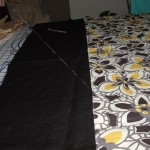
Your fabric is on-grain when the crosswise and lengthwise threads are at perfect right angles to each other. You should be able to pull the crosswise thread, the cut edge of the fabric, from one selvage to the other selvage as shown in the picture to the left. If your fabric does not match the ends and selvages according to your pattern Cutting Guide when you begin to fold the fabric, it may be off-grain.
You will want to check the grain after the ends have been evened by aligning a large corner of the fabric with the corner of your cutting board or table. If the corners do not match, straightening the grain of your fabric is not only in order, but is an absolute must.
The first step you want to take with your fabric so that it can be folded evenly is to check for grain alignment, or what we call straightening the end. Depending on the type of fabric you have, you can choose from three different methods:
- Tearing is the fastest, but appropriate only for firmly woven fabrics like muslin or cotton, but can still cause the fabric to stretch. If you use the same method on other fabric types, you may cause it to snag or stretch more than you want and create more problems.
- Drawing a thread method is slower, but the most suitable for loosely woven, soft, or stretchy fabrics.
- Cutting on a prominent line that you can easily follow is a quick, simple method for any fabric that has a strong woven linear design like linen.
With either method, you can test the accuracy by pulling a thread from one selvage edge to the other selvage edge. If the thread ends or breaks off anywhere other than the opposite edge of your fabric, you should locate the point where the where the threads are lowest and start the process again from the lowest point.
If you notice that after straightening the edge or aligning the grain, your fabric does not match the ends and selvages according to your pattern Cutting Guide when you begin to fold the fabric, it may only be slightly off-grain. If the fabric is only slightly off-grain, the solution is to steam press the fabric to gently urge the threads into proper alignment before you go any further. Fold your fabric, right sides together, in half lengthwise and pin about every five inches along the selvages and ends.
You may also need to pin your fabric to the ironing board just to keep it square as you press. Make firm strokes with a good steam iron from the selvages toward the fold.
Keep in mind that not every off-grain fabric can be corrected; especially if the fabric has been treated in some way with a water repellent or permanent press finish, or a bonded backing. You will have to decide how the off-grain fabric will effect the finished look and fit of the garment you are spending your time and labor to sew.
Straightening the grain of your fabric should be done first.
